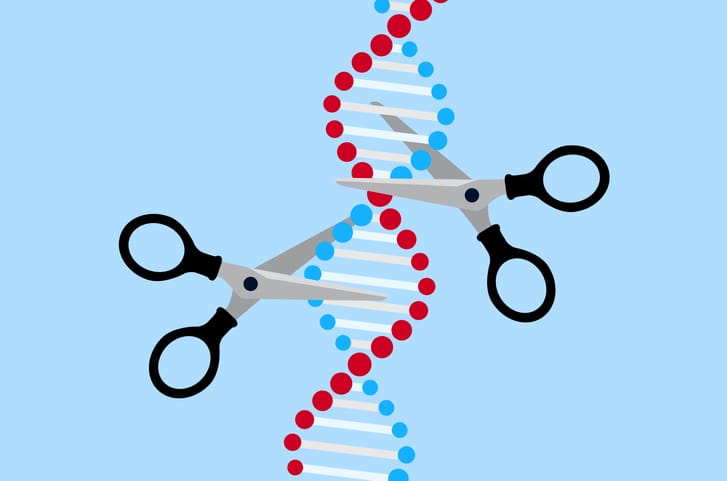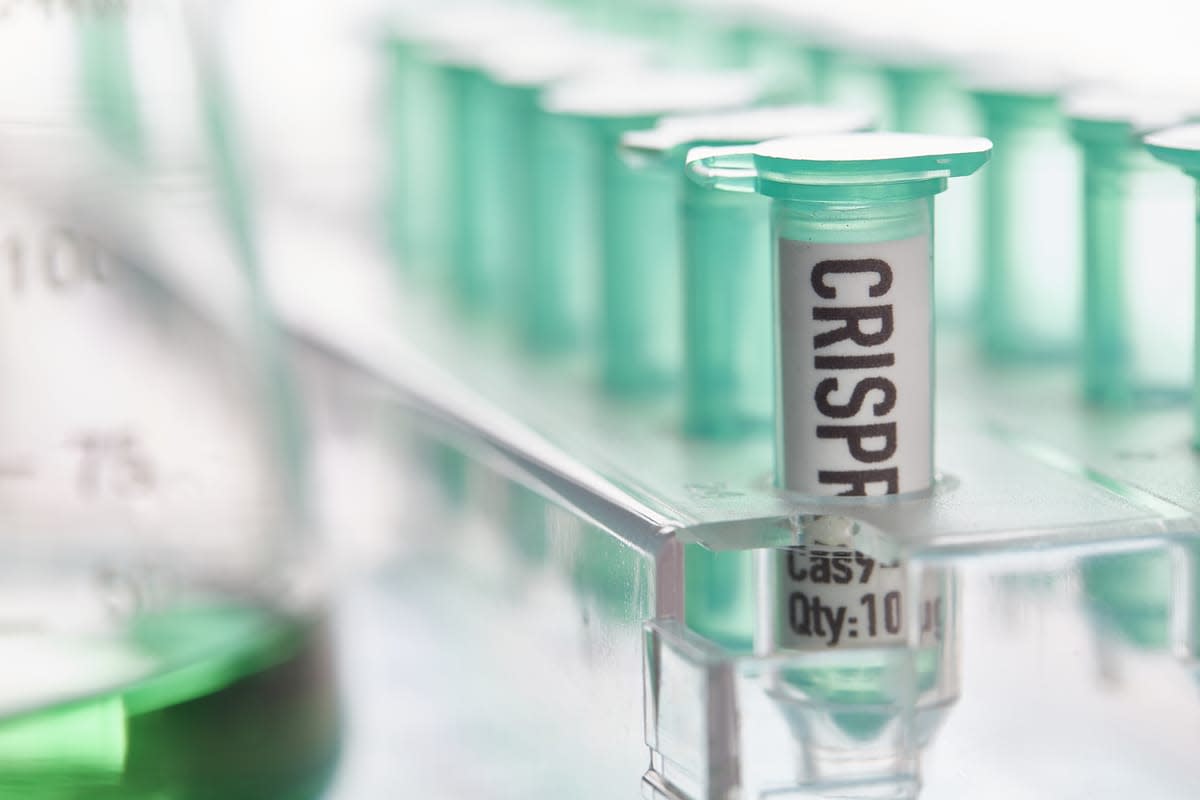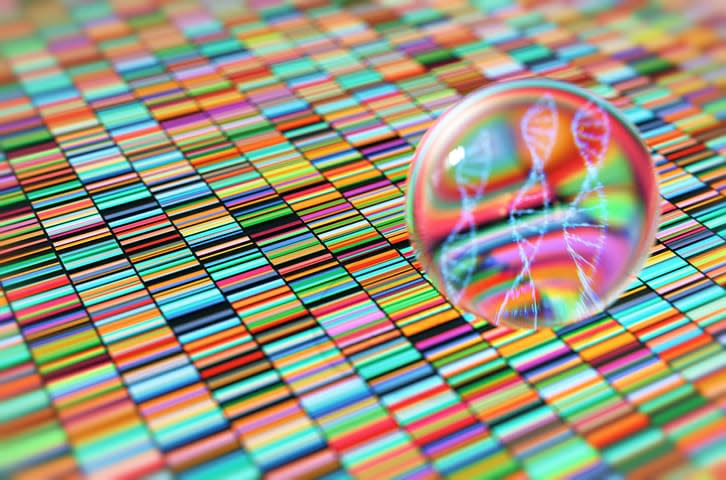
Before baby twin girls Lulu and Nana were born in China in November 2018, their genes were edited, using a technique known as CRISPR-Cas9. Chinese scientist He Jiankui announced their birth before the Second International Summit on Human Genome Editing in Hong Kong, stunning scientists around the world and triggering his house arrest.
Using techniques such as CRISPR-Cas9 in human reproduction is illegal in many countries, including Australia and the US. China stopped Dr He’s research and is investigating whether he broke any laws.
In the meantime, Dr He released a video, explaining why he used CRISPR, and how he went about it. The purpose was therapeutic, he insists. The babies were conceived using in-vitro fertilisation, and the embryos were gene-edited before they were implanted in their mother’s womb. CRISPR was used to disable the CCR5 gene, with the goal of creating HIV-resistant babies.
In the video, Dr He describes the babies as healthy, and pronounces the experiment a success. (The father of the twins is infected with HIV; the parents were recruited with the help of an HIV/AIDS advocacy group.)
Many scientists and ethicists around the world have been alarmed by the development, renewing their calls for a moratorium on the use of CRISPR in human embryos. Opinion is divided over whether Dr He’s results should be published in scientific journals, because this may be seen to legitimise his work.
A serious risk
Monash bioethicist Catherine Mills describes Dr He’s experiment as one that was “medically unnecessary and that creates a serious risk for the children”.

“Even if we wanted to move towards gene editing – which is the emerging consensus, I think – this was too early.”
In the video, Dr He said he was proud to have used the technique to create HIV-resistant babies. But Professor Mills says: “These children weren’t affected by HIV. It’s a prophylactic that is not obviously necessary, given that we already have robust ways of preventing HIV, and there is no real risk of transmission from the HIV positive father anyway.”
One of the difficulties and dangers of using CRISPR in humans “is that we don’t know how effective it is in the long term”, she says. “We don’t know whether the modifications will remain stable, for instance.”
Another problem that can arise is mosaicism, where some cells contain the edited gene, but others do not. Because the twin’s whereabouts are unknown, Dr He’s claims that procedure was a success cannot be verified.
Professor Mills says it’s vitally important that the twins be monitored, so that the procedure’s long-term effects are documented. She also believes Dr He’s results should published, so that information is shared. The experiment involved germline modification – which means that the changes will be inherited by any children the twins may have. If the gene editing has unintended consequences, they could be experienced by future generations.
“There are issues of off-target effects, where it might cause damage in other areas,” Dr Mills says. “But there are also worries about unintended consequences of on-target effects. It may do exactly what you want it to do, but the way in which those changes interact with other parts of the genome may have negative consequences in itself.”
Reproductive scenario
Asked to describe a scenario where genome editing using CRISPR-Cas9 might be necessary, she says: “We have a lot of reproductive options at the moment. We have pre-implantation genetic diagnosis, which allows people to choose embryos without negative genetic markers. So, if someone has a genetic condition – say, Huntington’s disease – they can choose the embryo that doesn’t have that.
“If you’re in a situation where every embryo you’re going to produce will have a genetic issue, then that might be a situation where you might want to move towards something like CRISPR. But that’s going to be a pretty limited number of situations.
“We should also keep in mind that this is all about having genetically related children. So, if you’re in that situation, you could otherwise adopt or use donor gametes.”
"It may do exactly what you want it to do, but the way in which those changes interact with other parts of the genome may have negative consequences in itself.”
Because genome editing isn’t an obvious frontline therapy for many conditions, and because reproductive alternatives exist, “some people suggest that its real purpose is human enhancement”, she says. “And then you get into interesting questions about what the limits of enhancement might be. When people talk about the potential of human enhancement, they’re mostly thinking of things like enhancing intelligence – but, to be frank, that’s not going to be possible.” Qualities such as intelligence and beauty are the result of a complex number of interacting factors, and beyond the scope of CRISPR.
Germline modification of embryos is already taking place. In 2015, the British parliament approved the use of mitochondrial replacement therapy (MRT), a form of in-vitro fertilisation, where a proportion of a future baby’s mitochondrial DNA comes from a third party – the technique is popularly known as three-parent IVF. The procedure is used in families where the children are at risk of developing mitochondrial disease, inherited through the mother’s mitochondria.
Because mitochondria are only inherited matrilineally, the US has restricted its use to male embryos. This ensures that the changes can’t be inherited. But in the UK, the therapy can be used on male and female embryos.
MRT has not yet been approved in Australia. Professor Mills hopes the use of CRISPR in China will alert Australian legislators to proceed with caution. “Because of the way our regulation is, mitochondrial replacement therapy could act as a kind of wedge technology for CRISPR, unless we finesse aspects of our legislation to make MRT different, as not a heritable modification. If we allow it as a heritable modification, that’s also going to open the way for genome editing using CRISPR.”
More discussion needed
It concerns her that issues as important as this are under-reported and barely understood in Australia, when their potential impact on our future society could be profound.

“It’s really problematic how little discussion there is around new reproductive technologies, in particular,” she says. “Take prenatal genetic screening. We’re moving towards whole genome sequencing of foetuses, yet we just don’t talk about it very much.”
She concedes that many people consider these developments as an exciting way to cure future generations of disease, but adds: “They can also be worrying in terms of what it means for our thinking about disability, for ideas about inclusive societies. What are the welfare implications for people who are not treated, and who have genetic conditions? These technologies have huge social consequences. And we do need to be thinking about those.”
Fate unknown
Asked about the probable fate of He Jiankui in China, Professor Mills says it will be interesting to see what happens to him after his house arrest. In Australia, someone using CRISPR in human reproduction could face a jail term of 15 years for violating the Prohibition of Human Cloning Act. But China is caught between wanting to be at the cutting edge of new scientific developments, while also wanting “to be seen as a responsible science nation”.
“The consequences of pushing ahead and being the first to do these things for individual scientists are not always bad,” she says. “They get a great deal of notoriety from it. It can be very good for their labs or clinics. It may have commercial benefits.” But it may not be good for science, if it undermines public trust.





